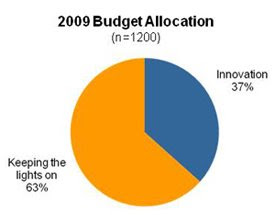Oracle, Redwood Shores, Calif., had originally
The whole SQL databases and associated tools and modeling ecosystem is ripe for tumult. My best guess is that Oracle's pending Sun Microsystems purchase will provide offense via MySQL, and the associated community, to target the Microsoft SQL Server franchise.
Oracle can both keep tabs on the MySQL evolution while under-cutting Microsoft. Good work, if you can get it. Oh, and they can attract more middleware sales as they seduce the developers and deeply snare the operations folks.
On the other big future directon, to the cloud, modeling and managing data become the points of the arrow to attacting more sticky data into your cloud. We're ready seeing this in business process modeling as IBM is giving away such tools via BlueWorks. The enticement? To bring more process meta data and rules execution to Big Blue's cloud.
My expectation is that Oracle, HP, IBM, Red Hat, Amazon, Google, and Microsoft will begin to offer more "free" cloud-based enticements to enterprise developers and archirects that 1) hurt their competition whenever possible, and 2) solidify their respective advantages to create long-term cloud customers. Then repeat, extend, and solidify. [Disclosure: HP is a sponsor of BriefingsDirect podcasts.]
Remember when free and open source software began to disrupt the staus quo, and the large enterprise vendors could no longer ignore it? They played the same way. IBM, for example, embraced Linux (to hurt Microsoft and also sell more commodity hardware) and Apache web servers (ditto). But IBM did not open source DB2 or WebSphere.
We'll see the same picking and choosing -- tactical and strategic -- of what is "free" or not, cloud-based or not, rationalized on a similar pattern of combined offense and defense. The good news is that the enterprise architects and developers will have more good choices, lowering costs, and be able to play the beheamoths off of one another -- just like with open source.
Perhaps we need to call the cloud thing ... Any Source.
Back to Oracle and its maneuvers in the SQL space ... The capabilities of the new data modeler include:
- Visual entity relationship modeling, which supports both Barker and Bachman notations so developers can switch between models to suit the audience’s needs or create and save different visual displays
- Forwarding of engineering ERDs to relational models, transforming all rules and decisions made at the conceptual level to the relational model, where details are further refined and updated
- Separate relational and physical models that enable users to develop a single relational model for different database versions or different databases.
- A full spectrum of physical database definitions, supporting physical definitions such as partitions, roles, and tablespaces for specific database versions for multi-database, multi-vendor support













